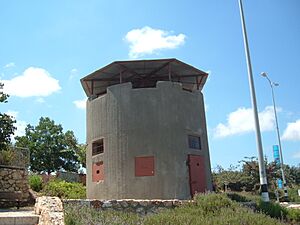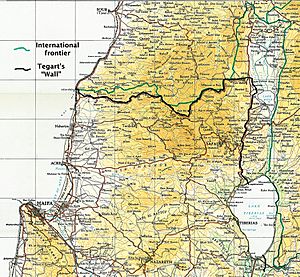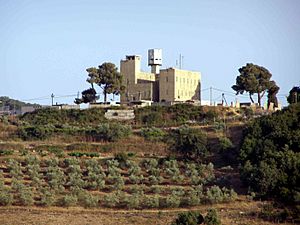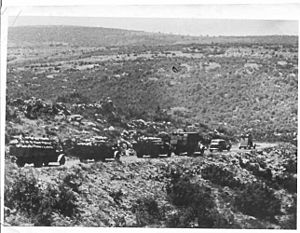Tegart's Wall facts for kids
Tegart's Wall was a special fence built by the British in 1938. It was made of barbed wire and located in the northern part of Mandatory Palestine, near the borders with Mandatory Lebanon and Mandatory Syria.
The main goal of this wall was to stop armed groups from entering Palestine. These groups were involved in a major uprising that happened between 1936 and 1939. Over time, the security system around the wall also included police forts, small fortified buildings called pillboxes, and police on horseback who patrolled the area.
Building a Border Barrier

The idea for Tegart's Wall came from Charles Tegart. He was an expert who advised the British government in Palestine on how to deal with unrest. In his first report, Tegart explained that it was very hard to defend the long border because of the mountains and valleys.
The barrier was built from the Mediterranean coast at Ras en Naqura all the way to the northern edge of Lake Tiberias. It cost about $450,000 to build. The fence itself was nine feet tall and made of barbed wire. It mostly followed the border between Palestine and French-controlled Lebanon. However, a small area called the Galilee panhandle was left outside the fence.
Even before the fence was fully finished, some armed groups managed to break through it. They ripped up a section of the fence and took it across the border into Lebanon.
Forts and Patrols
Along the route of the fence, five larger Tegart forts were built. These were strong police stations. Also, twenty smaller fortified buildings called pillboxes were constructed. Despite these efforts, people trying to cross the border often found ways around the fence and avoided the police patrols.
The wall made life difficult for local people on both sides of the border. It cut through their farms and land, and it made both legal and illegal trade harder. After the uprising ended in 1939, Tegart's Wall was taken down.
See also
- Separation barrier




